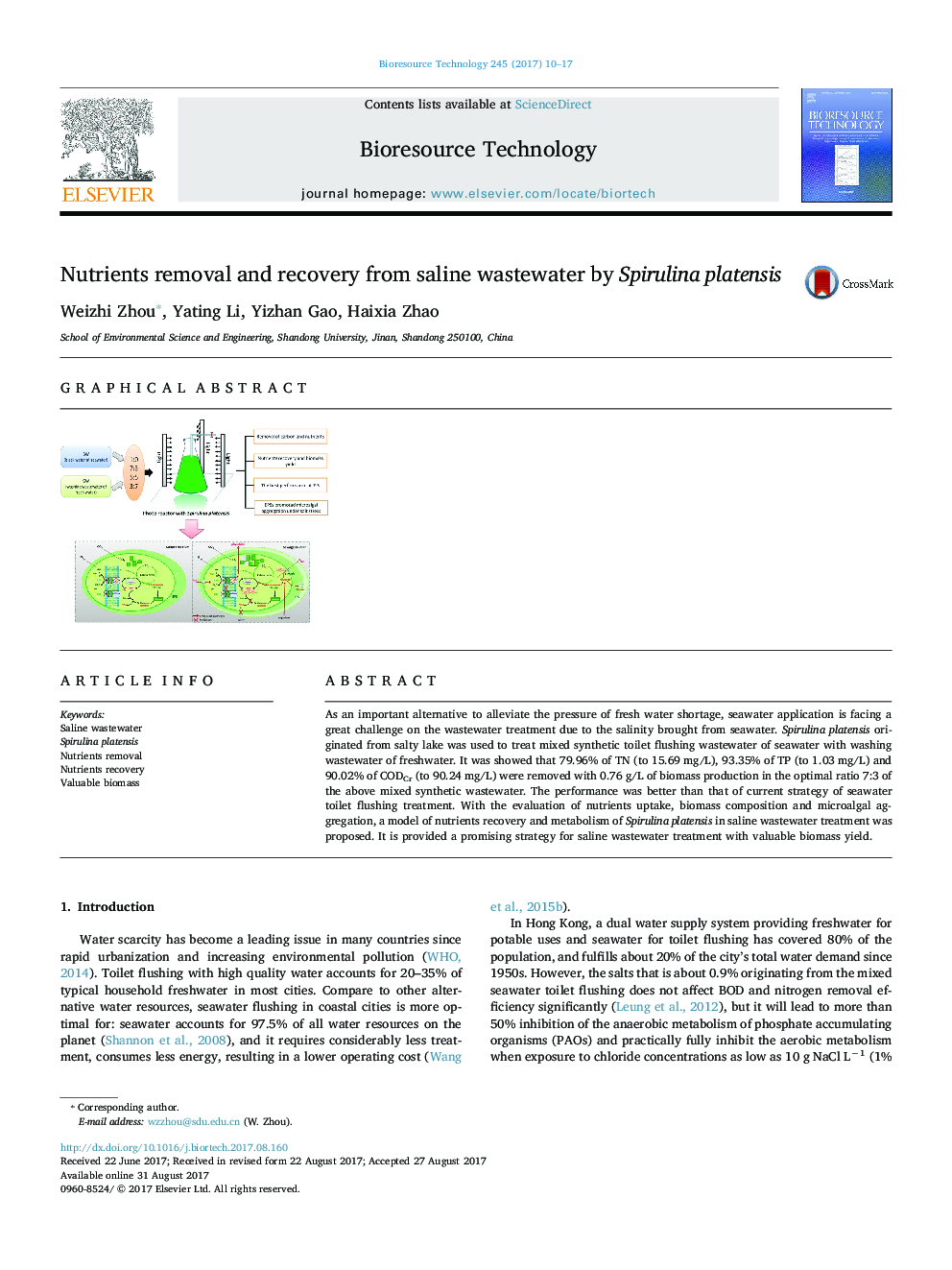| Article ID | Journal | Published Year | Pages | File Type |
|---|---|---|---|---|
| 4996761 | Bioresource Technology | 2017 | 8 Pages |
â¢Spirulina platensis was applied to treat saline wastewater from seawater application.â¢The best performance was achieved in the ratio 7:3 of black water and grey water.â¢Microalgal aggregation was promoted attributed to EPS matrix under salt stress.â¢The mechanism of nutrients recovery and metabolism was proposed in this system.
As an important alternative to alleviate the pressure of fresh water shortage, seawater application is facing a great challenge on the wastewater treatment due to the salinity brought from seawater. Spirulina platensis originated from salty lake was used to treat mixed synthetic toilet flushing wastewater of seawater with washing wastewater of freshwater. It was showed that 79.96% of TN (to 15.69Â mg/L), 93.35% of TP (to 1.03Â mg/L) and 90.02% of CODCr (to 90.24Â mg/L) were removed with 0.76Â g/L of biomass production in the optimal ratio 7:3 of the above mixed synthetic wastewater. The performance was better than that of current strategy of seawater toilet flushing treatment. With the evaluation of nutrients uptake, biomass composition and microalgal aggregation, a model of nutrients recovery and metabolism of Spirulina platensis in saline wastewater treatment was proposed. It is provided a promising strategy for saline wastewater treatment with valuable biomass yield.
Graphical abstractDownload high-res image (149KB)Download full-size image
